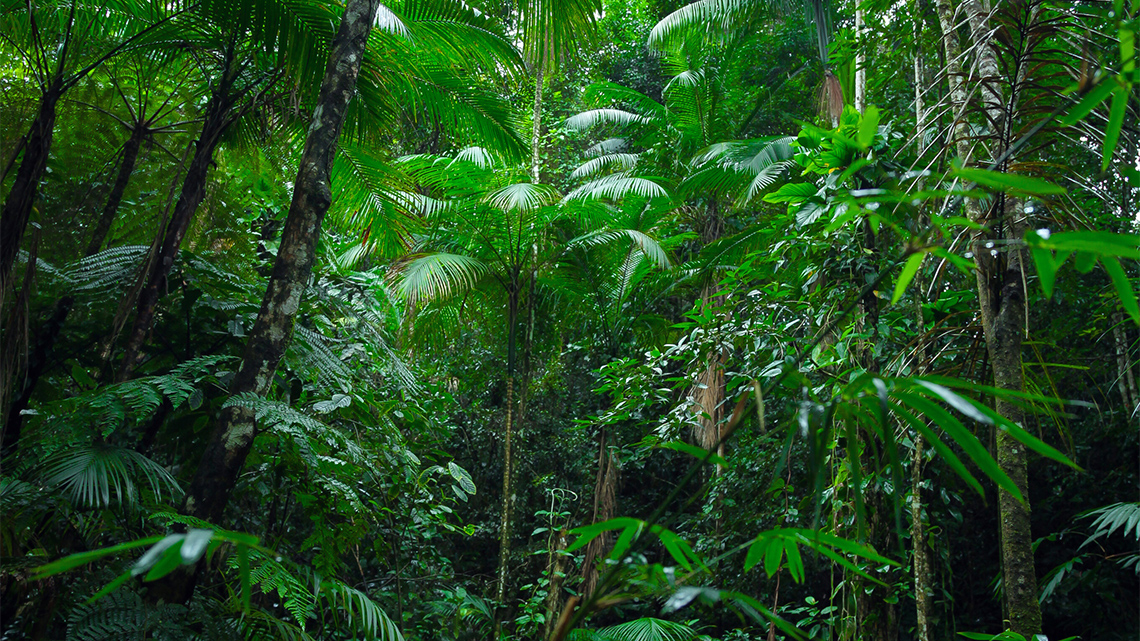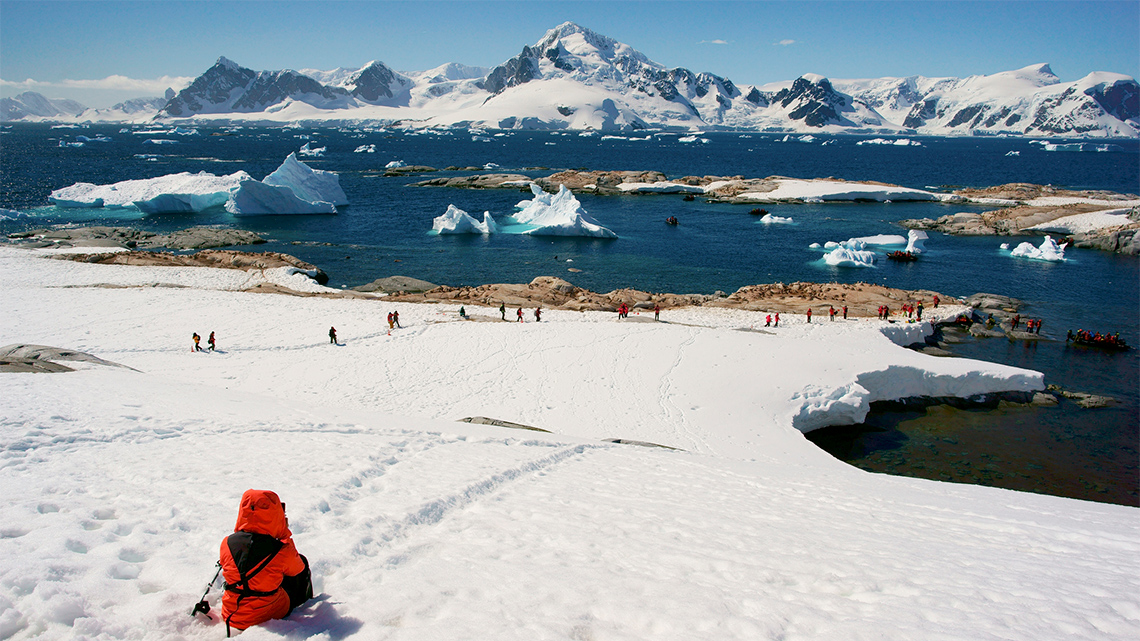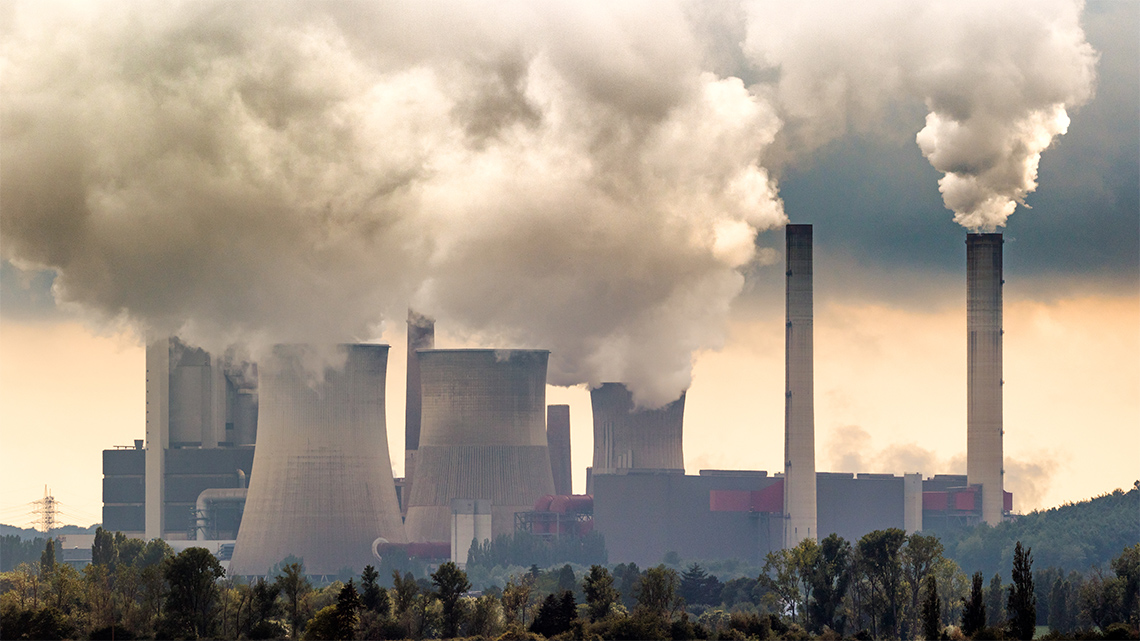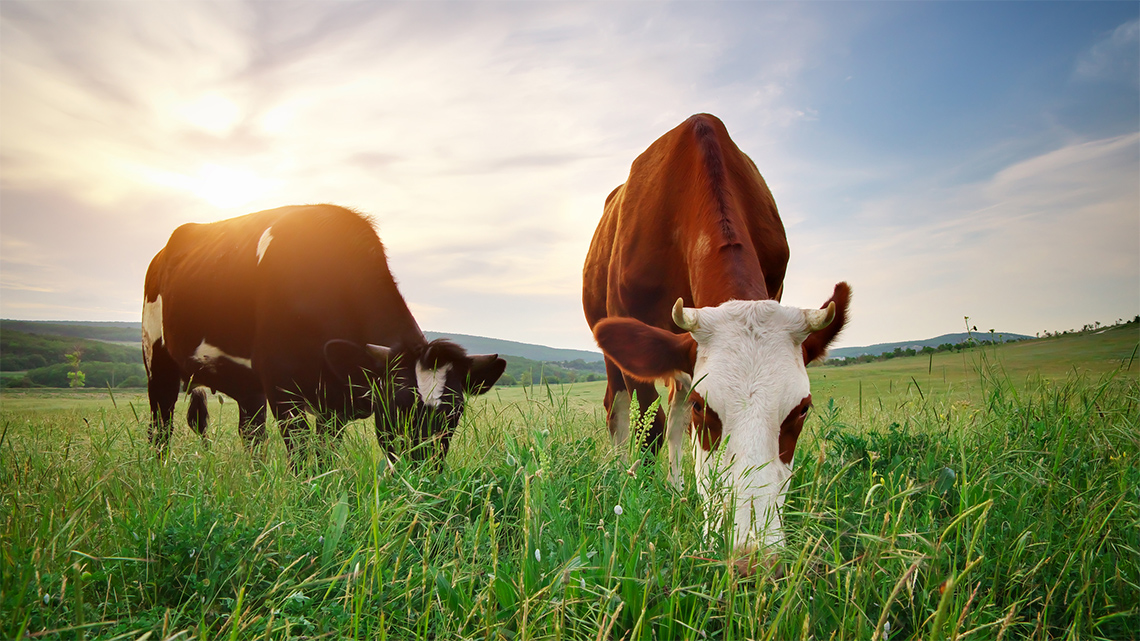Minds On
Weather vs. climate
Brainstorm
Be a word detective!
What is the difference between weather and climate?
Using the organizer, or a recording method of your choice, write some words that are associated with weather and words that are associated with climate.
Complete the following Weather and Climate Chart your notebook or use the following fillable and printable document. If you would like, you can use speech-to-text or audio recording tools to record your thoughts.
| Weather words | Climate words |
|---|---|
| My definition of weather | My definition of climate |
Press the ‘Activity’ button to access the Weather and Climate Chart.
What did you notice about the words that you chose?

Explore the following Lady Vocab video entitled “Climate” to learn more about the word climate. As Lady Vocab uses words to describe climate, check your brainstorm list. Did you include these words as well?
Action
Climate regions

As we discovered in the Minds On, weather and climate are not the same thing.
Press the following names of each concept to explore its definition.
A climate region is an area of the world that has very distinct climate patterns.
Around the world, there are categories of climate regions.
Here are the major climate regions:
- tropical
- dry
- temperate or mild
- continental
- polar
Carefully consider each statement that has been defined by the National Geographic Society to determine the specific characteristics of each of these climate regions. Then, press 'Check Answer' to check your responses.
You can also record your responses using a method of your choice.
Student Success
Think-Pair-Share
Based on the descriptions of each climate region, which climate region do you believe you live in? What clues did you use to support your thoughts?
Press ‘Your climate region’ to access climate information about Ontario.
Ontario includes three different sub-groups of the continental climate region:
- Most of southern Ontario lies in the warm summer continental region.
- The most northern parts of Ontario are in the subarctic continental region.
- Windsor and the surrounding area are in the hot summer continental region.
Note to teachers: See your teacher guide for collaboration tools, ideas and suggestions.

Search for geographic resources (print, digital, oral), such as Canadian or world geographic websites, that can support you with factual information about how each of these factors affects the climate of a region.
You can use the template provided to record your information, or record use a method of your choice.
Use the checklist to guide your investigation.
Latitude
Wind and air masses
Elevation
Ocean currents
Bodies of water
Landforms
Complete the Natural Factors and Climate Chart in your notebook or use the following fillable and printable document.

Press the Activity button to access the Natural Factors and Climate Chart.
Activity(Opens in a new tab)Press ‘Factors affecting climate’ to access the answers to the activity.
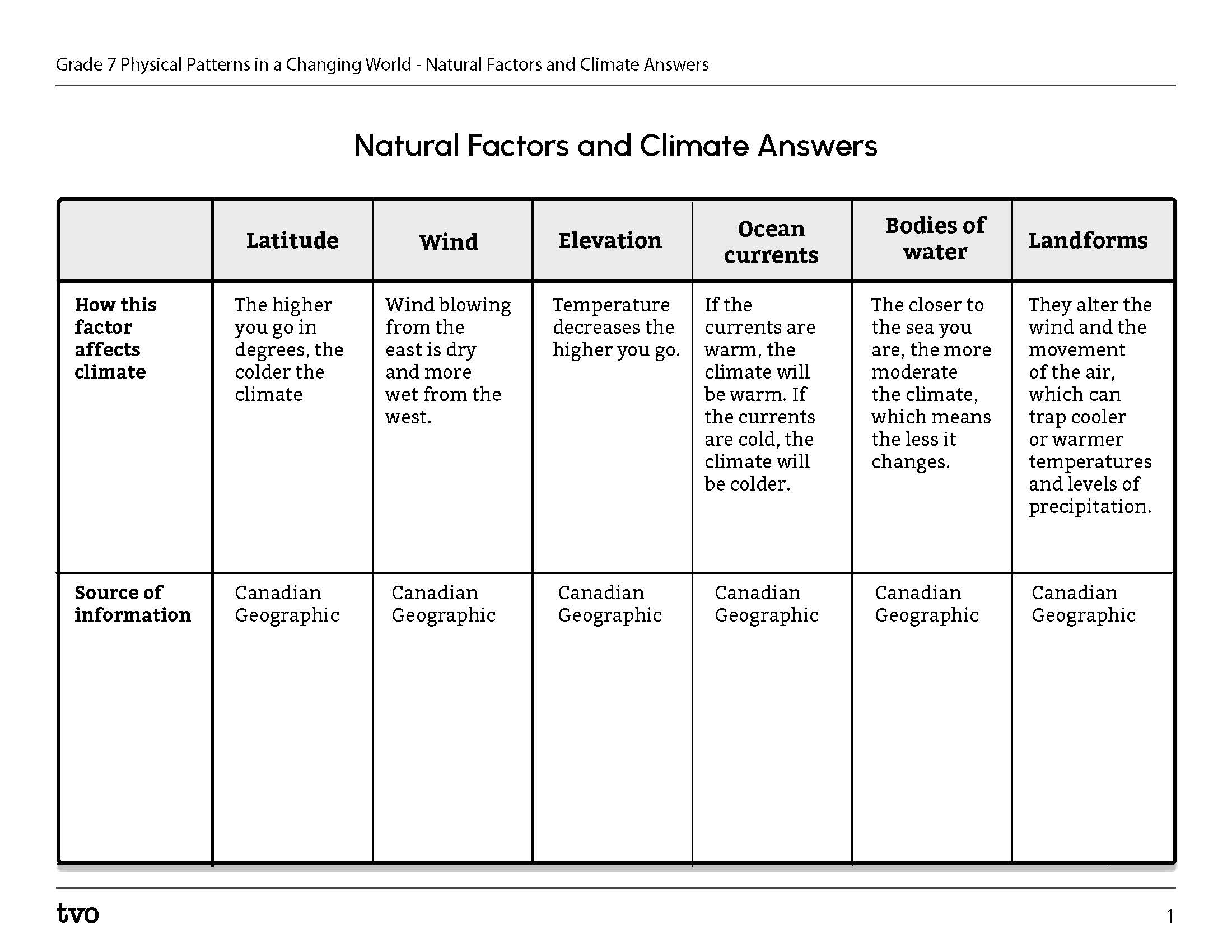
Press the Activity button to access the Natural Factors and Climate Chart Answers.
Activity(Opens in a new tab)
Brainstorm
Climate change
What is climate change?
Press ‘Definition’ to reveal the definition of climate change.
Climate change is defined as changes in long-term weather patterns that are caused by natural phenomena or human activity altering the chemical composition of the atmosphere. These may include changes in temperature, precipitation, and/or wind patterns, and may result in global warming and an increase in severe weather conditions.
Student Success
Think-Pair-Share
Can natural processes cause a change in climate?
Use the information that you have gathered, the descriptions of the climate regions, the definition of climate change, and your own knowledge to share your thoughts about this question.
Record your response using a method of your choice, and share your answers with a partner, if possible.
Note to teachers: See your teacher guide for collaboration tools, ideas and suggestions.
Humans creating climate change
In the following video from The Space entitled "David Suzuki Part 2", David Suzuki is asked two questions about climate change by viewers of different ages. How does Suzuki respond to the second question asked by Qasim?
Press ‘Answers’ to check your answers.
We have sped up the warming of the Earth by 1 degree in the last 150 years, which is much faster than it would naturally warm up. We have done this by generating greenhouse gases (the gases in the Earth’s atmosphere that trap heat). Because of this, we are changing the temperature on land, in the water, and in the atmosphere, leading to issues such as an increase in hurricanes.
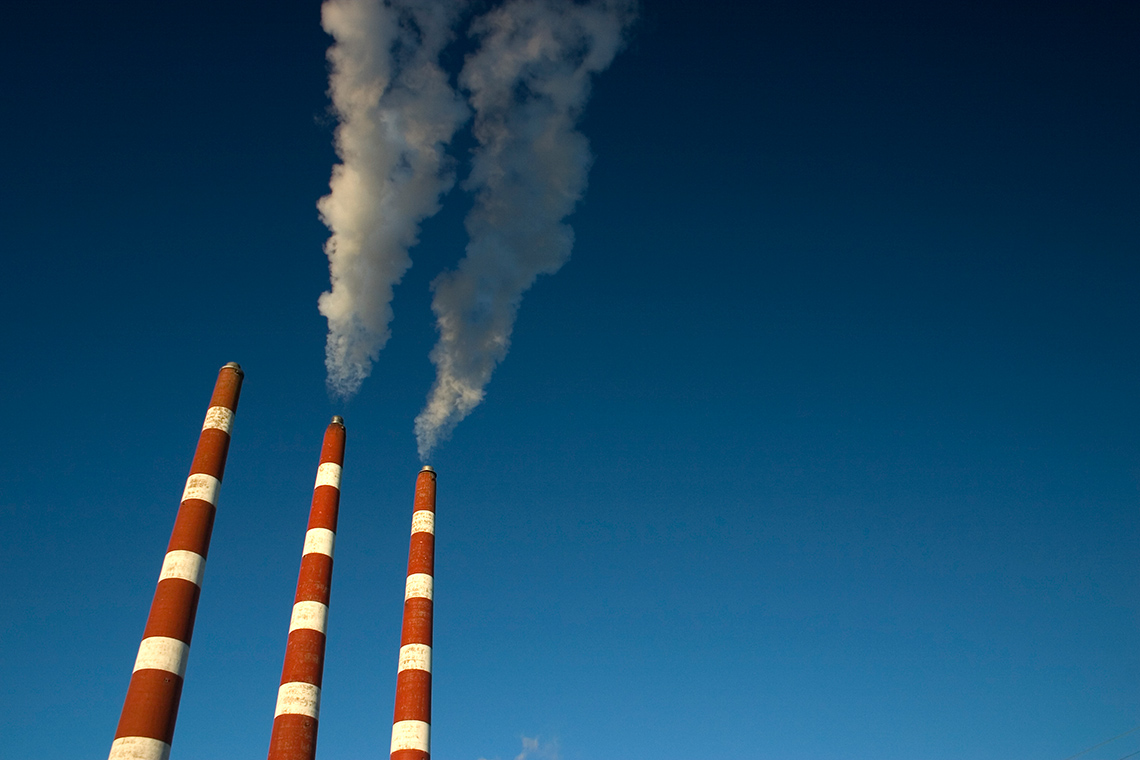
Explore the following carousel of images and descriptions, which explain other ways in which humans contribute to changes in climate.
For each example, consider:
- Who may benefit from this human activity? Who may not benefit from this human activity? What about non-human populations such as plants, fish, animals, or insects?
- How might this affect climate patterns?
Record your ideas using a method of your choice.
Consolidation
Making a change
Explore the following video from That TVOkids Show entitled "Climate Strike" to learn more about a climate strike that took place in Toronto, where students from many areas came together to protest human activities that contribute to changes in climate patterns. In this video, we also learn how our actions can make a difference, as Scientist Sara discusses.
While exploring the video from your Grade 7 perspective, take note of the different actions mentioned that could create change in human activities that affect climate.
Choose one of these actions that are mentioned, and investigate how this action could make a positive change.
Create a poster or an audio advertisement to bring awareness to how this action could make a positive impact!

Use the following checklist to help guide you as you create your own awareness advertisement.
My awareness advertisement:
Reflection
As you read the following descriptions, select the one that best describes your current understanding of the learning in this activity. Press the corresponding button once you have made your choice.
I feel...
Now, expand on your ideas by recording your thoughts using a voice recorder, speech-to-text, or writing tool.
When you review your notes on this learning activity later, reflect on whether you would select a different description based on your further review of the material in this learning activity.
Press ‘Discover More’ to extend your skills.
Discover MoreThe federal government of Canada has been investigating the plan to charge a carbon tax in Canada. Explore the following video from TVOK News to learn more about this topic.
To whom is the government considering charging this carbon tax?
Do a little further investigating to gain a greater understanding of this tax, and respond to the following questions:
- Why might there be some groups who do not think it is a good idea?
- What groups would think this tax is a good idea? Why?
- How do you feel about this tax? Explain why you feel this way.
